The Jungle Nymph: A Giant Amongst Stick Insects
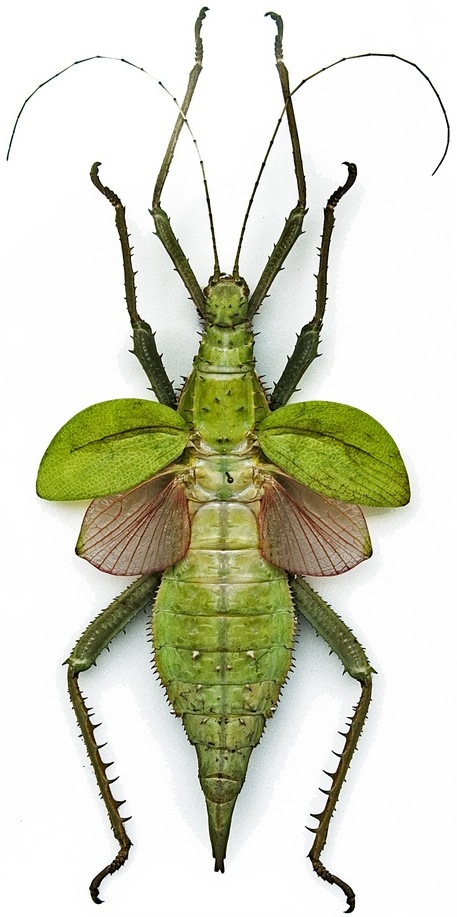
First described in 1835, the jungle nymph, known scientifically as Heteropteryx dilatata, stands out from other stick insects. Mature females are wide-bodied and an attractive lime green in colour. They are well-protected by a series of sharp, reddish spines, which makes their alternative name of "thorny tree-nymph stick insect" equally valid!
This species may not be the largest stick insect in terms of its length, with females growing to around 15cm (6in) overall, but they are certainly the heaviest. Adult females can weigh around 50g (1.75oz) when mature, making them too heavy to fly. Nevertheless, they still possess a small rudimentary pair of leaf-like wing covers on their back, with reddish, lace-like wings beneath. These can be used to deter would-be predators by creating a hissing sound.
They have long wings, extending down each side of the body, and are able to fly. Once fully grown, a male can measure around 9cm (3.5in).
Housing
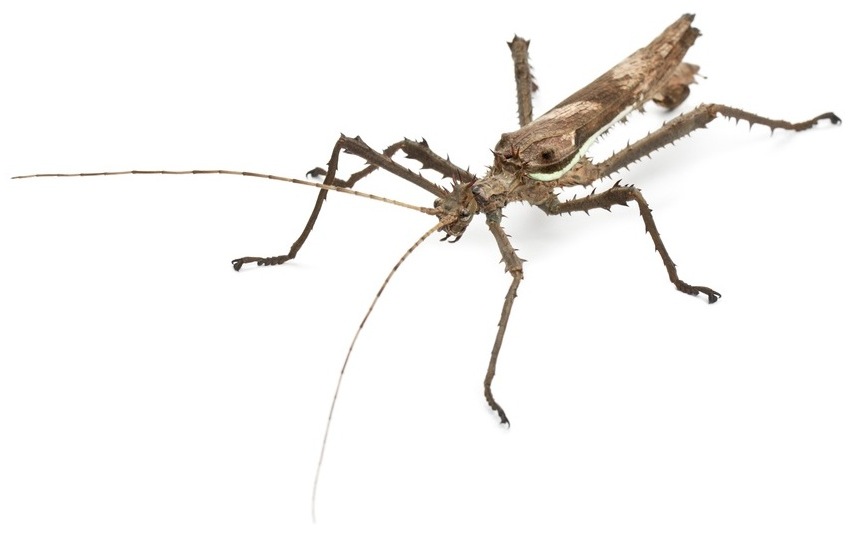
The size of these stick insects means that they require a relatively large enclosure by the time they are ready to breed. Originating from the tropical region of western Malaysia, so they also need to be kept warm, at a temperature between 24-26°C (75-79°F) during the day, dropping back slightly at night. This can be achieved by using a heat pad under thermostatic control.
These phasmids also need to be kept in relatively humid surroundings. A hygrometer reading in their quarters of around 70-80% is ideal, but good ventilation in their quarters is also important, to prevent moulds developing. The use of a plant sprayer is likely to be required several times a week, to prevent the humidity falling too low.
A variety of materials can be used for the substrate. Vermiculite is useful, as it holds humidity well, and highlights the stick insects’ droppings, which can be removed with an old teaspoon. Some people a more naturalistic floor covering though, favouring a forest soil-type product, and even paper towelling can be used.
Heed the warning!

Jungle nymphs have a particular threat gesture, placing their head close to the ground as a warning, and raising up their abdomen and powerful hind legs, which are well-endowed with spikes. They can then rapidly compress a finger very painfully between their legs, to the point of drawing blood.
It is therefore advisable to wearing gardening gloves to protect you, when you need to pick these insects up, just as you would when handling thorny roses! Do not pull them off a branch, as their feet are equipped with sharp hooks. Instead, tease these off gently first, if the stick insect is unwilling to release its grip.
Starting out
The cheapest option will be to purchase eggs, and hatch these at home, although if they are freshly laid, you will need to be very patient, because of the length of time that they will take to hatch. Alternatively, you may be able to acquire young nymphs, but it will not be possible to sex them at this early stage. Both sexes look identical up until their fourth moult, when females gain their distinctive greenish colouration for the first time, although there are also yellowish strains that are occasionally available.
Dietary needs
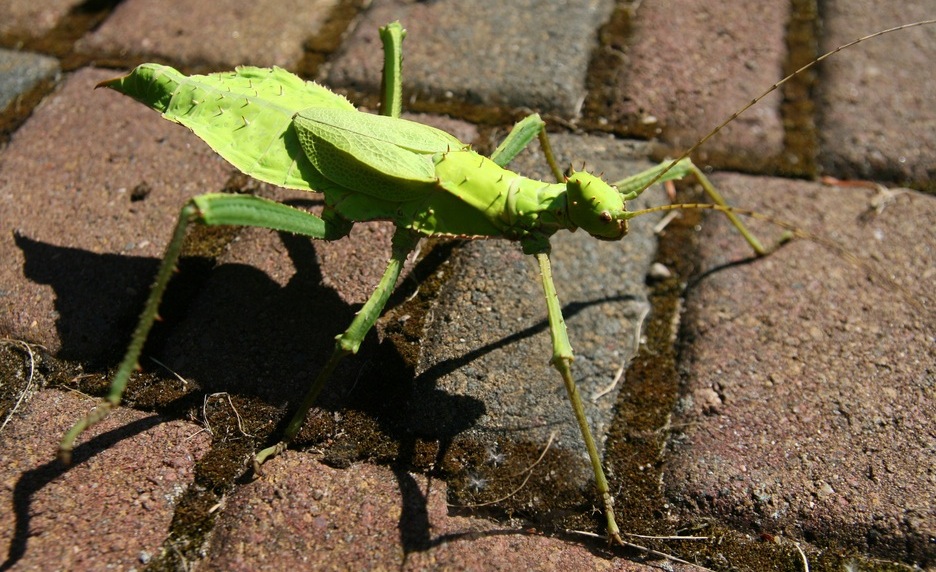
Feeding is very straightforward, as jungle nymphs will eat the usual stick insect fare, such as bramble, which is a good wintertime food, as well as eucalyptus, rose and oak. But you need to ensure that you provide them with branches that are strong enough to support the weight of females in particular.
It is not always easy to obtain supplies of bramble through the year, but if you dig up some roots, and plant these in a pot in a warm area on a windowsill, and keep the soil watered, you should find that fresh shoots start developing quite quickly. It may sometimes be easier to put the whole plant with fresh shoots in the stick insect’s quarters, rather than cutting off lengths with leaves attached.
 Did you know?
Did you know?If the leaves have died back and turned brown around the edges, as is common over the winter months, trim this area off, so the stick insects can feed on the green parts of the leaves. Otherwise, they are likely to starve themselves.
Branches can be placed in a jar of water to prevent the leaves drying up prematurely, with the area around the neck of the vessel being stuffed with tinfoil. This will prevent any risk of the stick insects becoming trapped here and drowning.
Height matters
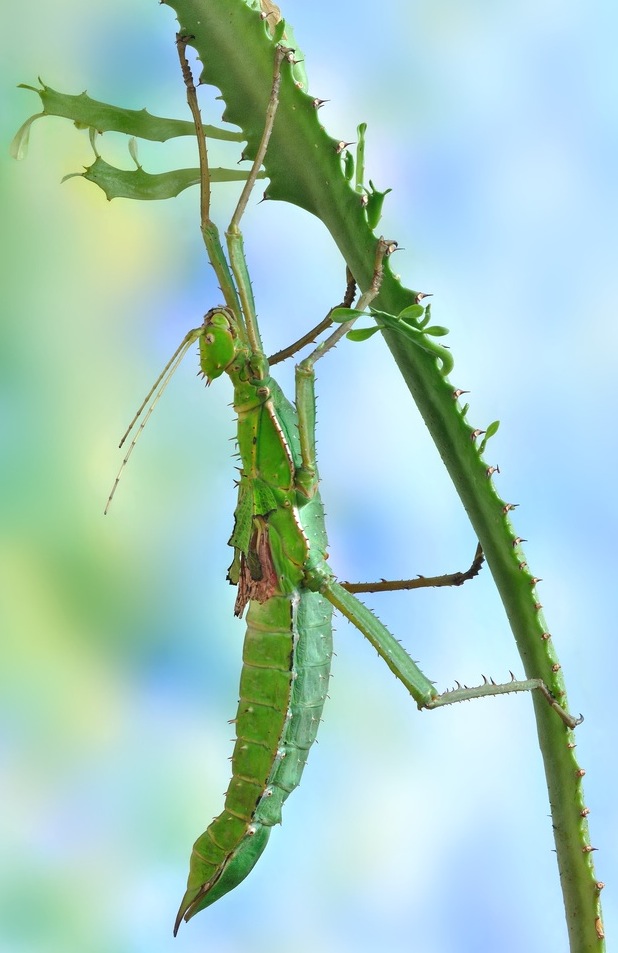
You can also use artificial vines for the jungle nymphs to climb on. They must have the opportunity to clamber around their quarters, becoming particularly active under cover of darkness.
A critical period is the stage when the female is completing her fifth moult, and becoming an adult. Once you notice that she is hanging off a branch, increase the humidity in her quarters with more regular spraying. This will help her to complete this process without a problem.
It is vital that the branches are also high enough to allow the stick insect to extend its body, so it can escape from its old skin when moulting. If necessary, raise the branch up - otherwise, the outcome is likely to be fatal.
Breeding
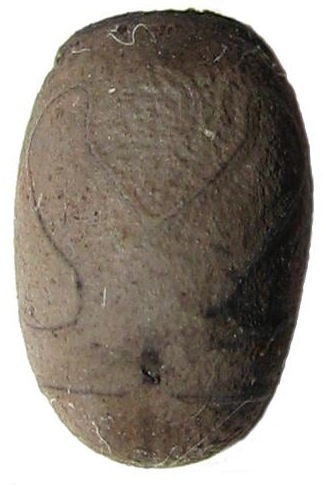
Unlike the situation with some stick insects, mating is necessary in the case of jungle nymphs, in order for viable eggs to be produced. These can take anywhere from a year up to 18 months to hatch, and resemble small brown seeds with markings on their sides, as shown in this magnified photo by Drägüs.
Females lay their eggs in batches, and typically produce 100-150 eggs each. Unlike others of their kind, which simply scatter their eggs randomly around their enclosure, spiny nymphs bury their eggs at least 2.5cm (1in) deep in the substrate, which therefore needs to be at least double this depth in a breeding enclosure.
Alternatively, you could provide a small plant pot for laying purposes, which can be transferred elsewhere more easily. Beware if you are providing bramble in pots though, in order to ensure that the female does not lay in the soil. In order to prevent this, wrap the area around the roots with tinfoil.
Hatching and rearing

The eggs will hatch in the same conditions as in the adult enclosure, but it may be better to hatch separately if you have space available. Vermiculite makes a good hatching medium because this inert material will not encourage fungal growth. The young jungle nymphs are already likely to be at least 2.5cm (1in) long when they finally emerge from their eggs.
They are very agile, capable of climbing well, and will drop to the ground like a twig if they sense danger, remaining immobile here for a few moments, before clambering back up again, in typical stick insect fashion. Fine mesh enclosures are useful to help them climb around easily, provided the necessary warmth and humidity can be maintained.
It is quite usual for young jungle nymphs to display a wide variety of patterns at this early stage. In addition, they will also change colour, tending to be a paler shade of brown, resembling beige, during the day, and then being transformed to a tan colour at night, as shown here by Drägüs. They can live for two to three years, giving them a longer life expectancy than most stick insects.
Although jungle nymphs are not particularly difficult to look after, they are less suitable as children’s pets than other species such as the Indian (laboratory) stick insect (Carausius morosus). This is not just because their bodies are well-protected by spines, but they are also rather aggressive by nature, especially when adult.